
Seville: The Heartbeat of Andalusia
Discover Seville, a city where flamenco, history, and vibrant culture come alive. From its majestic monuments to its lively festivals, Seville offers a unique travel experience.
Seville, the capital of Andalusia, is a city that dances to the rhythms of flamenco, echoes with centuries of history, and tantalizes with its vibrant culture and cuisine. Nestled along the banks of the Guadalquivir River, Seville is a place where ancient traditions and modern dynamism come together in a perfect blend. Stroll through the narrow, winding streets of the Santa Cruz neighborhood, where whitewashed houses and blooming geraniums create a picturesque setting. Visit the awe-inspiring Seville Cathedral, the largest Gothic cathedral in the world, and marvel at the Giralda Tower, which offers panoramic views of the city. Don't miss the Alcázar of Seville, a stunning palace complex with lush gardens and intricate Moorish architecture. Seville is also famous for its lively festivals, such as Semana Santa and Feria de Abril, which showcase the city's deep-rooted cultural heritage. Experience the passion of flamenco in one of the many tablaos, or enjoy a leisurely evening at a tapas bar, sampling local delicacies like jamón ibérico and gazpacho. The city's warm climate and friendly locals make every visit a memorable one.
Local tips in Seville
- Visit the Real Alcázar early in the morning to avoid long queues and enjoy the gardens in peace.
- Wear comfortable shoes for walking as Seville's charming streets are best explored on foot.
- Try to learn a few basic Spanish phrases; locals appreciate the effort and it enhances your experience.
- Join a local flamenco show to experience the authentic passion of Seville's cultural heritage.
- Check the schedule for local festivals and events to make the most of your visit.
Neighbourhoods in Seville
Seville: The Heartbeat of Andalusia
Seville, the capital of Andalusia, is a city that dances to the rhythms of flamenco, echoes with centuries of history, and tantalizes with its vibrant culture and cuisine. Nestled along the banks of the Guadalquivir River, Seville is a place where ancient traditions and modern dynamism come together in a perfect blend. Stroll through the narrow, winding streets of the Santa Cruz neighborhood, where whitewashed houses and blooming geraniums create a picturesque setting. Visit the awe-inspiring Seville Cathedral, the largest Gothic cathedral in the world, and marvel at the Giralda Tower, which offers panoramic views of the city. Don't miss the Alcázar of Seville, a stunning palace complex with lush gardens and intricate Moorish architecture. Seville is also famous for its lively festivals, such as Semana Santa and Feria de Abril, which showcase the city's deep-rooted cultural heritage. Experience the passion of flamenco in one of the many tablaos, or enjoy a leisurely evening at a tapas bar, sampling local delicacies like jamón ibérico and gazpacho. The city's warm climate and friendly locals make every visit a memorable one.
When is the best time to go to Seville?
Iconic landmarks you can’t miss
Plaza de España
Explore the stunning Plaza de España in Seville, a breathtaking blend of history, architecture, and vibrant culture set against picturesque gardens.

Royal Alcázar of Seville
Explore the Royal Alcázar of Seville, a UNESCO World Heritage site, where stunning architecture and lush gardens reveal Spain's rich cultural heritage.
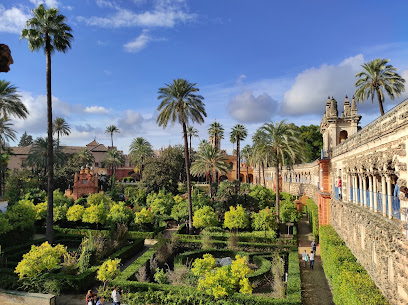
Setas de Sevilla
Discover Setas de Sevilla: An architectural gem offering breathtaking views, local markets, and a blend of modern and historical Seville.

Catedral de Sevilla
Explore the grandeur of Catedral de Sevilla, a UNESCO World Heritage Site and a stunning example of Gothic architecture in the heart of Seville.

Torre del Oro
Discover the Torre del Oro, Seville's historical fortress, and enjoy breathtaking views and a glimpse into the city's maritime heritage.

La Giralda
Discover La Giralda, Seville's iconic bell tower, showcasing stunning architecture and panoramic views of the vibrant cityscape.

Parque de María Luisa
Experience the beauty and tranquility of Parque de María Luisa, Seville's historic park, filled with lush gardens, stunning architecture, and serene pathways.

Puente de Triana
Experience the timeless beauty of Seville at Puente de Triana, a historic bridge with breathtaking views and vibrant local culture.

Casa de Pilatos
Discover the captivating blend of Renaissance and Mudejar architecture at Casa de Pilatos, a must-see historical landmark in Seville.

Iglesia Colegial del Divino Salvador
Explore the breathtaking architecture and rich history at the Iglesia Colegial del Divino Salvador, a must-see Catholic church in Seville.

Palacio de las Dueñas
Explore the majestic Palacio de las Dueñas, a historical landmark in Seville with stunning architecture and rich cultural heritage.

Archivo de Indias
Discover the Archivo de Indias in Seville, a UNESCO World Heritage Site showcasing Spain's colonial history through a rich collection of historical documents.

Murillo Gardens
Explore the lush beauty of Murillo Gardens, a serene escape in Seville, featuring vibrant flora, artistic sculptures, and tranquil pathways.

Puente de la Barqueta
Discover the stunning Puente de la Barqueta, a modern architectural marvel offering breathtaking views and a picturesque stroll along Seville's scenic waterfront.

Plaza de América
Explore the tranquil beauty of Plaza de América in Seville, a perfect garden oasis showcasing vibrant flora, historic architecture, and serene fountains.

Unmissable attractions to see
Plaza de España
Discover the architectural grandeur and cultural richness of Plaza de España, a must-visit historical landmark in Seville, Spain.

Royal Alcázar of Seville
Explore the Royal Alcázar of Seville, a stunning blend of architectural styles and lush gardens, steeped in rich history and cultural significance.

Setas de Sevilla
Discover the breathtaking Setas de Sevilla, a stunning architectural wonder offering panoramic city views and a vibrant cultural experience.

Catedral de Sevilla
Explore the stunning Catedral de Sevilla, a UNESCO World Heritage site, showcasing Gothic architecture and rich history in the heart of Seville.

Torre del Oro
Explore the Torre del Oro, Seville's iconic historical landmark, showcasing the city's maritime history and offering stunning riverside views.
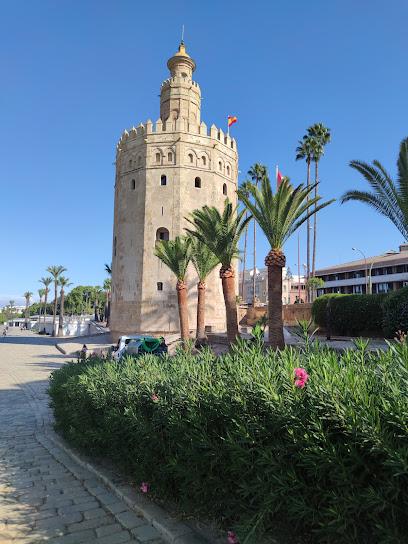
La Giralda
Explore La Giralda, Seville's majestic bell tower, a stunning blend of Moorish and Renaissance architecture with breathtaking views of the city.

Parque de María Luisa
Explore the botanical beauty and historical significance of Parque de María Luisa, a serene oasis in the heart of Seville, perfect for relaxation and cultural exploration.

Isla Mágica
Unleash your inner adventurer at Isla Mágica, Seville's enchanting theme park, where history meets thrilling rides and family fun.

Plaza de Toros de la Real Maestranza de Caballería de Sevilla
Explore the historic Plaza de Toros de la Real Maestranza de Caballería in Seville, a symbol of Spanish culture and bullfighting tradition.

Ramon Sanchez-Pizjuan Stadium
Experience the electrifying atmosphere of Ramón Sánchez-Pizjuán Stadium, home of Sevilla FC, and dive into the heart of Spanish football culture.

Alameda de Hércules
Discover Alameda de Hércules, Seville's historical landmark and cultural hotspot, featuring lush promenades, vibrant nightlife, and rich Spanish heritage.

Seville Museum of Fine Arts
Discover the rich tapestry of Spanish art at the Seville Museum of Fine Arts, a cultural gem in the heart of Seville's historic district.

Sevilla Aquarium
Experience the fascinating underwater world at Sevilla Aquarium, where marine life comes alive through immersive exhibits and educational experiences.
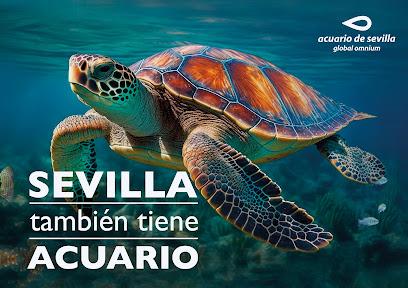
Casa de Pilatos
Explore the enchanting Casa de Pilatos in Seville, a stunning blend of Renaissance and Mudéjar architecture, rich in history and beauty.

Iglesia Colegial del Divino Salvador
Explore the stunning Baroque beauty of Iglesia Colegial del Divino Salvador, a historical gem in the heart of Seville's vibrant Casco Antiguo.

Essential places to dine
El Rinconcillo
Discover El Rinconcillo: A historic Andalusian restaurant in Seville offering authentic tapas and regional dishes in a charming setting.

Espacio Eslava
Experience authentic Andalusian tapas at Espacio Eslava in Seville's historic Casco Antiguo district.

Los Coloniales
Discover the rich flavors of Andalusian cuisine at Los Coloniales - a top-rated tapas bar in Seville's historic heart.

Casa Pepe Hillo
Experience authentic Andalusian cuisine at Casa Pepe Hillo – Seville's premier destination for exquisite tapas and vibrant culture.

Restaurante El Pintón
Experience authentic Spanish tapas at Restaurante El Pintón in Seville's historic Casco Antiguo district.

Las Teresas
Savor traditional Spanish tapas at Las Teresas, an iconic tavern in Seville's historic Casco Antiguo district.

Restaurante El Pasaje Tapas
Experience authentic Andalusian cuisine at Restaurante El Pasaje Tapas in Seville—where every bite tells a story.

La Bartola
Experience authentic Andalusian flavors at La Bartola - where every dish tells a story in the heart of Seville's Casco Antiguo.

Abades Triana Restaurante
Experience authentic Andalusian cuisine with stunning views at Abades Triana Restaurante in Seville - where every meal tells a story.

Restaurante San Marco Santa Cruz
Experience exquisite Mediterranean cuisine at Restaurante San Marco in Seville – where every dish tells a story of flavor.

Casa Manolo León
Discover authentic Andalusian cuisine at Casa Manolo León in Seville's historic Casco Antiguo district.

Torres y García
Discover authentic Mediterranean flavors at Torres y García in Seville – where every meal is a celebration of taste and tradition.

Restaurante La Escaloná
Discover the essence of Andalusian cuisine at Restaurante La Escaloná in Seville – where every tapa tells a story.

El Librero Tapas Y Quesos
Experience authentic Andalusian cuisine at El Librero Tapas Y Quesos in Seville – where tradition meets flavor in every bite.

El Traga
Experience the essence of Spanish cuisine at El Traga, where tradition meets innovation in every dish.

Markets, malls and hidden boutiques
CERAMICAS SEVILLA 1952
Discover the art of handcrafted ceramics at Ceramicas Sevilla 1952, a charming gift shop in the heart of Seville's historic Casco Antiguo.

Productos De La Sierra
Explore the culinary delights of Seville at Productos De La Sierra, your go-to destination for gourmet food, artisanal cheeses, and fine wines.

WONDER VINTAGE SEVILLA
Explore a unique collection of vintage clothing and accessories at Wonder Vintage Sevilla, a charming shop in the heart of Seville's historic district.

Artesanías Medina Sevilla
Explore the essence of Seville at Artesanías Medina Sevilla, where handcrafted souvenirs reflect the rich culture of Andalusia.
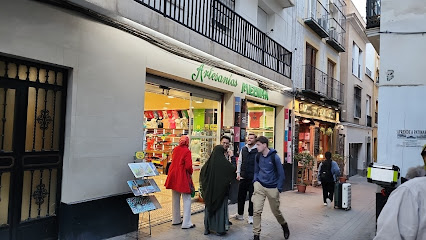
Arenal de Sevilla
Explore Arenal de Sevilla, where unique clothing and novelty treasures await in the historic heart of Seville, Spain.

Laura Moreno
Experience the essence of Seville with unique fashion and accessories at Laura Moreno Boutique, a hidden gem in the heart of Casco Antiguo.

Brownie - Sevilla
Discover trendy women's fashion at Brownie in Seville, a chic boutique offering stylish clothing and accessories for every occasion.
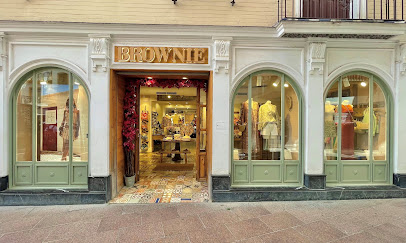
Coco Sevilla
Explore Coco Sevilla in the historic Casco Antiguo, where local craftsmanship meets unique home decor in the heart of Seville.

Sol de Sevilla
Explore Sol de Sevilla, a charming gift shop in the heart of Seville, offering unique local treasures and souvenirs for every traveler.

Sympathique Shop
Unearth the essence of Seville with unique fashion accessories at Sympathique Shop, where local artistry meets style in the heart of Casco Antiguo.

Duenda
Discover unique Andalusian gifts at Duenda, a charming shop in Seville's Casco Antiguo, where local craftsmanship meets cultural heritage.

Artesanías de Sevilla
Explore Artesanías de Sevilla for authentic souvenirs reflecting the rich culture and artistry of Seville's vibrant heritage.

Isadora
Explore Isadora, Seville's stylish women's clothing store, offering unique fashion pieces that embody the city's vibrant culture and elegance.

La Importadora Shop Gallery
Explore the vibrant fashion scene at La Importadora Shop Gallery in Seville, a boutique offering unique clothing and accessories that celebrate local culture.

El Jardin
Explore El Jardin in Seville's Casco Antiguo, a charming gift shop featuring unique handcrafted treasures that embody the spirit of local culture.
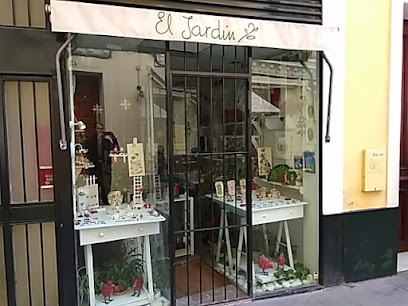
Essential bars & hidden hideouts
Bar Casa Morales
Experience authentic tapas at Bar Casa Morales, a charming Seville bar blending tradition and flavor in the heart of the city.

Bar Catedral Sevilla
Discover authentic tapas and the vibrant spirit of Andalusia at Bar Catedral Sevilla, nestled in the heart of the historic Casco Antiguo.

La Terraza del EME - Bar panorámico
Experience breathtaking views and exquisite cocktails at La Terraza del EME, the ultimate panoramic lounge in Seville's historic heart.
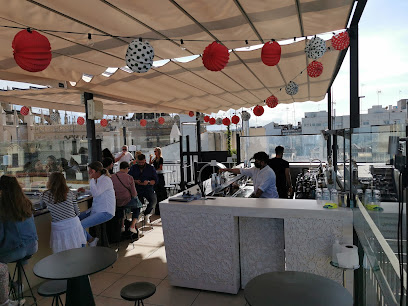
Le XiX
Experience the vibrant nightlife of Seville at Le XiX, where creative cocktails and delicious tapas come together in a stylish setting.

Pura Vida Terraza
Experience the vibrant nightlife of Seville at Pura Vida Terraza, a rooftop bar offering stunning views and exquisite cocktails.

Bar Garlochí - Sevilla
Experience the heart of Seville at Bar Garlochí, where delicious tapas and vibrant nightlife create unforgettable memories.

Lounge Bar Moss
Experience vibrant nightlife at Lounge Bar Moss in Seville, where delicious cocktails meet breathtaking views under Las Setas.

Manhattan river bar cocktails Sevilla
Discover the vibrant Manhattan River Bar in Sevilla - a cocktail haven by the river with stunning views and a lively atmosphere.

The Second Room - Sevilla
Discover the vibrant cocktail scene at The Second Room in Sevilla, where expertly crafted drinks meet a lively atmosphere in the heart of Casco Antiguo.

San Francisco
Discover the heart of Seville at San Francisco Lounge, where modern charm meets traditional Andalusian hospitality in the Casco Antiguo.

Naked and Famous
Experience the vibrant nightlife of Seville at Naked and Famous, a cocktail bar where every drink is an artful creation.

Plan B
Discover Plan B, a lively bar in Seville's Casco Antiguo offering refreshing drinks, friendly vibes, and a perfect spot to unwind.

Bar The Stance
Discover the vibrant nightlife of Seville at Bar The Stance, where local charm meets an unforgettable atmosphere.

Gallo Rojo. Factoría de Creación.
Experience the best of Seville at Gallo Rojo, where jazz, art, and craft brews blend in a vibrant cultural oasis.

Premier Sherry & Cocktail Bar
Discover the Premier Sherry & Cocktail Bar in Seville, a haven for cocktail lovers, blending tradition with modern mixology in a charming atmosphere.

Travel experiences inspired by this city
Explore more travel diariesLocal Phrases
-
- HelloHola
[oh-la] - GoodbyeAdiós
[ah-dee-ohs] - YesSí
[see] - NoNo
[noh] - Please/You're welcomePor favor/De nada
[por fah-bor/deh nah-dah] - Thank youGracias
[grah-thyas] - Excuse me/SorryPerdón/Lo siento
[pair-dohn/loh syen-toh] - How are you?¿Cómo estás?
[koh-moh ehs-tahs] - Fine. And you?Bien. ¿Y tú?
[byen. ee too] - Do you speak English?¿Hablas inglés?
[ah-blahs een-glehs] - I don't understandNo entiendo
[noh ehn-tyen-doh]
- HelloHola
-
- I'd like to see the menu, pleaseQuisiera ver la carta, por favor
[kee-syeh-rah vair lah kahr-tah, por fah-bor] - I don't eat meatNo como carne
[noh koh-moh kahr-neh] - Cheers!¡Salud!
[sah-lood] - I would like to pay, pleaseQuisiera pagar, por favor
[kee-syeh-rah pah-gahr, por fah-bor]
- I'd like to see the menu, pleaseQuisiera ver la carta, por favor
-
- Help!¡Ayuda!
[ah-yoo-dah] - Go away!¡Vete!
[veh-teh] - Call the Police!¡Llama a la policía!
[yah-mah ah lah poh-lee-thee-ah] - Call a doctor!¡Llama a un médico!
[yah-mah ah oon may-dee-koh] - I'm lostEstoy perdido/a
[ehs-toy pair-dee-doh/ah] - I'm illEstoy enfermo/a
[ehs-toy ehn-fehr-moh/ah]
- Help!¡Ayuda!
-
- I'd like to buy...Me gustaría comprar...
[meh goos-tah-ree-ah kohm-prahr] - I'm just lookingSolo estoy mirando
[soh-loh ehs-toy mee-rahn-doh] - How much is it?¿Cuánto cuesta?
[kwan-toh kwehs-tah] - That's too expensiveEs demasiado caro
[ehs deh-mah-syah-doh kah-roh] - Can you lower the price?¿Puedes bajar el precio?
[pweh-dehs bah-hahr ehl pree-seh-oh]
- I'd like to buy...Me gustaría comprar...
-
- What time is it?¿Qué hora es?
[keh oh-rah ehs] - It's one o'clockEs la una en punto
[ehs lah oo-nah ehn poon-toh] - Half past (10)Y media
[ee meh-dee-ah] - MorningMañana
[mah-nyah-nah] - AfternoonTarde
[tahr-deh] - EveningNoche
[noh-cheh] - YesterdayAyer
[ah-yehr] - TodayHoy
[oy] - TomorrowMañana
[mah-nyah-nah] - 1Uno
[oo-noh] - 2Dos
[dohs] - 3Tres
[trehs] - 4Cuatro
[kwah-troh] - 5Cinco
[theen-koh] - 6Seis
[says] - 7Siete
[syeh-teh] - 8Ocho
[oh-choh] - 9Nueve
[nweh-veh] - 10Diez
[dyehth]
- What time is it?¿Qué hora es?
-
- Where's a/the...?¿Dónde está...?
[dohn-deh ehs-tah] - What's the address?¿Cuál es la dirección?
[kwahl ehs lah dee-rehk-thyon] - Can you show me (on the map)?¿Puedes enseñarme (en el mapa)?
[pweh-dehs ehn-seh-nyar-meh (ehn ehl mah-pah)] - When's the next (bus)?¿Cuándo es el próximo (autobús)?
[kwan-doh ehs ehl proh-ksee-moh (ow-toh-boos)] - A ticket (to ....)Un billete (a ...)
[oon bee-yeh-teh (ah ...)]
- Where's a/the...?¿Dónde está...?
History of Seville
-
Seville's history can be traced back to its origins as a small Iberian town. It gained prominence under Roman rule when it was known as Hispalis. The Romans left an indelible mark on the city's infrastructure, including the construction of roads, aqueducts, and public buildings. The remains of the Roman city walls and the columns of the Alameda de Hércules stand as a testament to this era.
-
After the fall of the Roman Empire, Seville came under Visigothic control until the early 8th century when the Moors conquered the Iberian Peninsula. Under Islamic rule, the city flourished as Ishbiliyah, becoming a significant center of culture, learning, and commerce. The Moorish legacy is evident in the iconic Giralda tower, originally a minaret, and the Alcázar of Seville, a stunning palace complex with intricate Islamic architectural details.
-
Seville was recaptured by the Christian forces in 1248 during the Reconquista, led by King Ferdinand III of Castile. The city underwent significant transformation, with the construction of many churches on former mosque sites, including the magnificent Seville Cathedral. This period also saw the integration of Gothic and Mudéjar styles in architecture, blending Christian and Islamic influences.
-
Seville became the gateway to the New World following Christopher Columbus's voyages. The city's port on the Guadalquivir River turned into a bustling hub of commerce and exploration during the 16th and 17th centuries, known as the 'Golden Age.' The Casa de Contratación (House of Trade) was established to control trade with the Americas, and the Torre del Oro (Tower of Gold) was constructed to protect the port.
-
The 18th century brought both prosperity and challenges to Seville, including a devastating plague and economic difficulties. However, the city experienced a resurgence in the 19th century with industrial advancements and urban development. Landmarks such as the Plaza de Toros de la Maestranza, one of the oldest bullrings in Spain, were constructed during this period.
-
The 20th century saw Seville hosting significant events like the Ibero-American Exposition of 1929, which left a lasting legacy with the creation of the stunning Plaza de España and the Maria Luisa Park. The city continued to grow and modernize, while preserving its rich historical and cultural heritage. Seville's vibrant traditions, including flamenco music and dance, Semana Santa (Holy Week), and the Feria de Abril (April Fair), continue to attract visitors from around the world.
Seville Essentials
-
Seville is well-connected by air, rail, and road. The Seville Airport (San Pablo Airport) offers both domestic and international flights. For those traveling by train, the Santa Justa Train Station services high-speed AVE trains from major cities like Madrid and Barcelona. Bus services are also available via the Plaza de Armas and Prado de San Sebastián bus stations. If you prefer to drive, Seville is accessible via several major highways.
-
Seville has an extensive public transportation system including buses, trams, and a metro line. Taxis are readily available and relatively affordable. For a more local experience, consider renting a bicycle; the city is quite bike-friendly with numerous bike lanes. Sevici, the public bike-sharing system, is a popular option. Walking is also a great way to explore Seville’s historic center.
-
The currency in Seville is the Euro (EUR). Credit and debit cards are widely accepted, but it’s advisable to carry some cash for smaller purchases, especially in local markets and small establishments. ATMs are plentiful throughout the city. Tipping is not obligatory but appreciated; rounding up the bill or leaving a small amount is customary in restaurants.
-
Seville is generally a safe city, but like any tourist destination, it’s important to stay vigilant. Pickpocketing can occur in crowded areas like the Cathedral and popular shopping streets. The neighborhood of El Vacie is best avoided after dark. Always keep an eye on your belongings and avoid displaying valuable items conspicuously.
-
In case of emergency, dial 112 for police, fire, or medical services. Seville has several hospitals including Hospital Universitario Virgen del Rocío and Hospital Universitario Virgen Macarena. Pharmacies (farmacias) are abundant and can provide assistance for minor health issues. It’s advisable to have travel insurance that covers medical emergencies.
-
Fashion: Do dress conservatively when visiting religious sites. Avoid overly casual attire in upscale restaurants. Religion: Do respect local customs and traditions. Always cover your shoulders and knees when entering churches. Public Transport: Do offer your seat to elderly or pregnant women. Don’t speak loudly. Greetings: Do greet people with a handshake. A casual 'Hola' is commonly used. Eating & Drinking: Do try local dishes like tapas and paella. Don’t rush your meals; dining is a leisurely activity in Seville.
-
To experience Seville like a local, visit the Triana neighborhood for authentic flamenco shows and ceramics. Enjoy a leisurely stroll along the Guadalquivir River or join locals for a siesta in the late afternoon. Don’t miss the local markets like Mercado de Triana for fresh produce and local delicacies. For an authentic experience, attend a local festival such as Feria de Abril or Semana Santa.
Trending Landmark in Seville
Nearby Cities to Seville
-
Things To Do in Huelva
-
Things To Do in Cádiz
-
Things To Do in Ronda
-
Things To Do in Casemates Square
-
Things To Do in Moorish Castle
-
Things To Do in Gibraltar
-
Things To Do in Main Street
-
Things To Do in Catalan Bay
-
Things To Do in Queensway Quay Marina
-
Things To Do in Alameda Botanic Gardens
-
Things To Do in St. Michael's Cave
-
Things To Do in Gorham's Cave Complex
-
Things To Do in Europa Point
-
Things To Do in Málaga
-
Things To Do in Faro





























